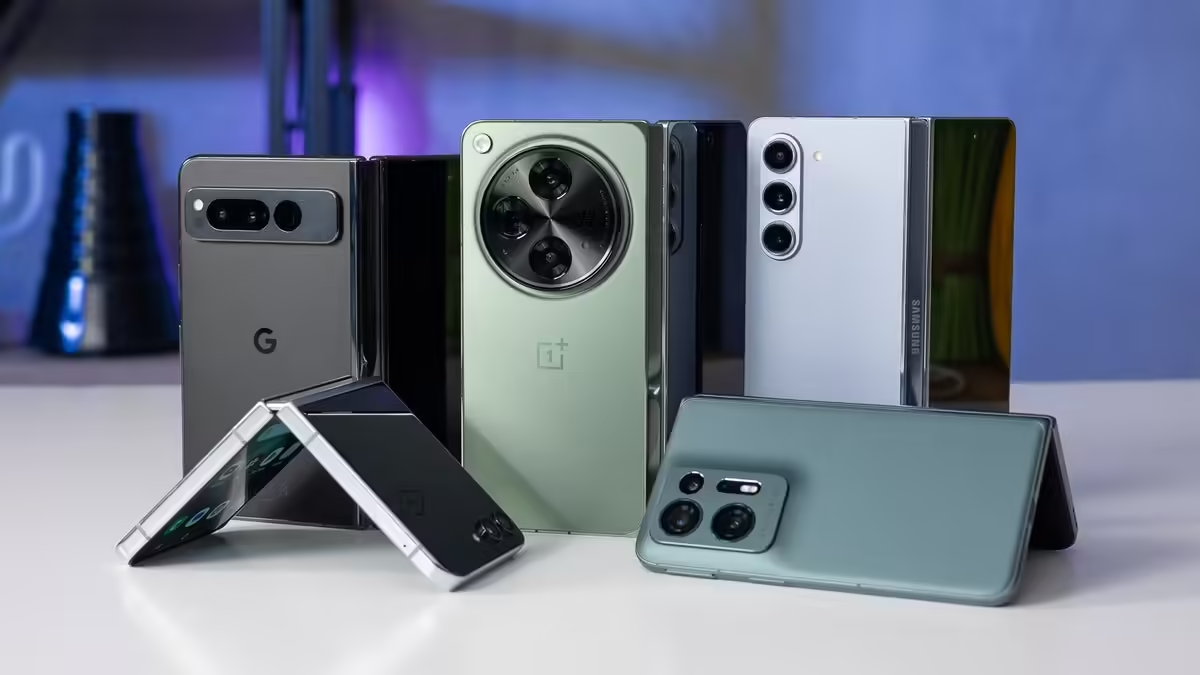Foldable devices are no longer just a novelty—they’re rapidly becoming mainstream. With the release of Android 15, developers have access to new APIs and tools designed specifically for building optimized, flexible applications that take advantage of the unique form factors of foldable devices. As the popularity of foldables continues to grow, creating applications that deliver seamless and adaptable user experiences across various screen configurations is crucial for any Android developer.
In this blog post, we’ll explore the key Android 15 development tips you need to know for building apps for foldable devices, including handling multiple screen states, utilizing new layout strategies, and ensuring a smooth user experience during transitions between folded and unfolded modes.

Understanding Foldable Device States
The primary challenge of developing for foldable devices lies in the multiple screen states they can support. These include:
• Fully Unfolded: When the device is opened to its maximum size, offering a tablet-like experience.
• Fully Folded: When the device is compact, offering a more traditional smartphone screen size.
• Partially Folded: A hybrid state where part of the screen is visible, often used for multitasking or media playback.
Developers need to handle each of these states to ensure that their apps adapt smoothly to the various screen configurations.
Tip #1: Use Android 15’s New APIs for Foldables
With Android 15, Google has introduced several new APIs to help developers create apps that can handle foldable devices more easily. These APIs simplify detecting different foldable states and transitions, including when a device is opened or closed, and adjusting the app’s layout accordingly.
For example, the Posture API allows developers to detect when a device is in a “half-open” or “flat” posture, enabling you to adjust the user interface based on the device’s physical configuration. This is particularly useful when adapting the app’s UI elements to take advantage of a partially folded device.
val posture = WindowLayoutInfo.posture
when(posture) {
POSTURE_FLAT -> // Optimize for full screen
POSTURE_HALF_OPENED -> // Adapt to partial fold
}This flexibility helps apps provide an intuitive and responsive experience, no matter how the device is being used.
Tip #2: Optimize Layouts for Multi-Window Modes
Foldable devices are often used in multi-window modes, where users can run two or more apps side by side. Android 15 offers better support for multi-window environments, allowing you to specify how your app should behave in split-screen or freeform modes.
Developers can use the WindowManager library to query the device’s foldable state and handle window sizes dynamically. Ensuring that your app provides a smooth experience in multi-window modes—without layout or performance issues—is key to delivering an optimal experience on foldables.
val windowMetrics = windowManager.currentWindowMetrics.boundsUse this to adjust your app’s UI components to fit smaller or irregular windows, ensuring that no important content is hidden or truncated.
Tip #3: Plan for Continuity in Transitions
A significant feature of foldable devices is their ability to transition between different screen states (such as folded to unfolded) without interrupting the user experience. Android 15 provides enhanced support for continuity, allowing apps to smoothly transition between configurations while preserving the user’s state.
When building for foldable devices, make sure your app can adjust its layout, reload data if necessary, and maintain the user’s current interaction seamlessly. ViewModel and LiveData are great tools for managing state during configuration changes, ensuring that the user doesn’t experience interruptions when the device is folded or unfolded.
class MainViewModel: ViewModel() {
// Retain data and states during configuration changes
}Using ViewModels ensures that the app remains responsive, even during significant layout transitions.
Tip #4: Leverage Adaptive UI Design
One of the most important strategies for developing for foldables is utilizing adaptive UI design. This involves creating flexible layouts that can scale and rearrange content based on the available screen space.
ConstraintLayout and Jetpack Compose are ideal for designing responsive layouts, allowing your app to handle different device sizes and aspect ratios dynamically. Jetpack Compose’s BoxWithConstraints is particularly useful for adapting to changes in screen size, making it easier to reposition UI elements as the screen unfolds or folds.
BoxWithConstraints {
if (constraints.maxWidth > 600.dp) {
// Unfolded view layout
} else {
// Folded view layout
}
}By designing for flexibility, you can ensure that your app provides a consistent experience across multiple form factors, from traditional phones to foldables.
Tip #5: Consider Multi-Resumed Activities
Another key aspect of Android 15’s foldable support is the ability for multiple activities to be resumed at the same time in multi-window or multi-screen modes. This allows users to interact with multiple apps simultaneously, and developers need to ensure that their app handles this effectively.
Test your app in scenarios where multiple activities are running simultaneously and make sure that UI interactions remain smooth and responsive. Android 15’s improved activity lifecycle management makes it easier to maintain states across multiple resumed activities without causing performance slowdowns.
Tip #6: Handle Input Responsively
Foldable devices often come with additional input methods, such as stylus support or dual-screen typing. It’s important to optimize your app to handle these different input styles, ensuring a fluid and intuitive experience. For example, if your app supports drawing or note-taking, take advantage of foldable screens by enabling full-screen canvas modes when the device is fully unfolded.
Additionally, make sure to test your app’s responsiveness with external keyboards, as some foldable devices offer laptop-style input when partially folded.
Conclusion: Why Optimizing for Foldables is Essential in 2024
As foldable devices become more widespread, optimizing apps for these unique form factors is crucial to staying competitive in the Android ecosystem. With Android 15 offering enhanced support for foldables, including new APIs, layout strategies, and activity management, developers can create apps that provide seamless, adaptive experiences across different screen configurations.
By leveraging these Android 15 development tips, you’ll be able to build responsive, high-performance apps that not only look great on foldable devices but also enhance user engagement and productivity.

